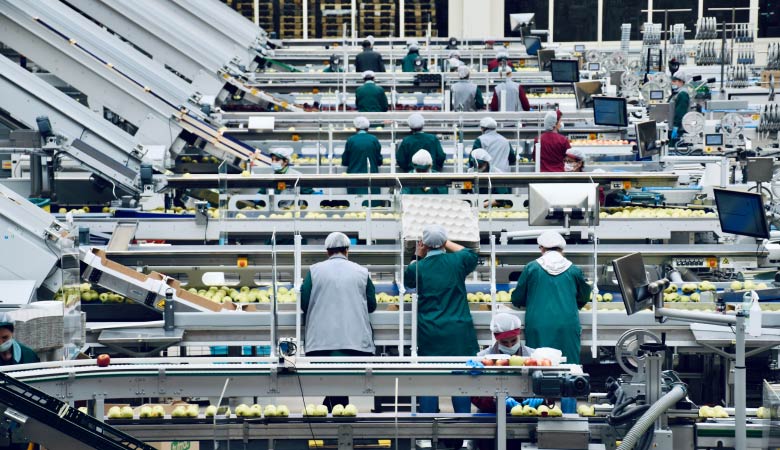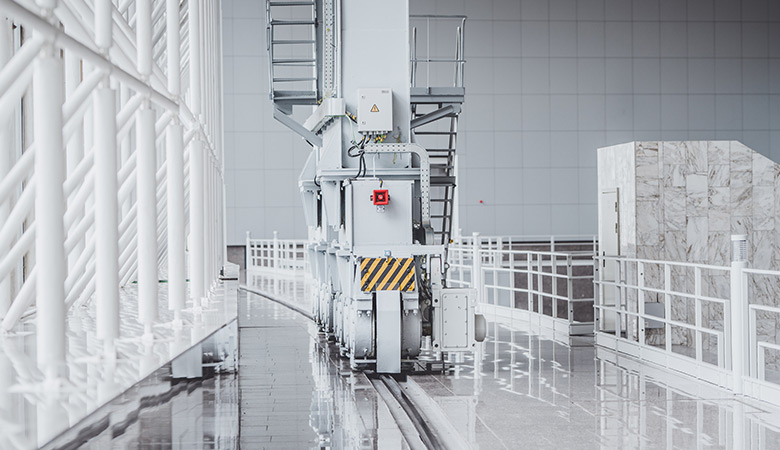Management / Articles
5S methodology: what is it, why it matters and how to implement
Quality, productivity and safety. This is what the 5S methodology means for companies, what its key advantages are and the leanest path to implementation.

 9 minutes of reading
9 minutes of reading
2022-05-26 14:58:23
It only takes 5 words – all started with an “S” – to transform a workstation, increase productivity, minimize errors and make spaces safer and more ergonomic. This is what the 5S methodology is, what its benefits are for organizations and how to implement it.
What is the 5S methodology and why it matters?
5S is a workplace organization methodology. Its key aim is to achieve a more productive, ergonomic and safe workspace, with less waste and higher quality output. The name derives from five Japanese words, all starting with the letter “S”, which also represent the implementation sequence.
- Seiri (Sorting). In the first step operators go through every tool and utensil in the workplace to select what they actually need to perform a specific task. Everything else is removed;
- Seiton (Set in Order). The motto of this step could not be simpler: “a place for everything, everything in its place”. Set in Order means finding the most suitable space for each utensil, in order to bring the more frequently used tools closer to the user;
- Seiso (Shine). The goal of the third step is to cleanse the equipment and restore each machine and tool to its ideal working conditions;
- Seiketsu (Standardize). Standardisation comprises documenting the ideal conditions achieved in the previous three steps so that it is easier to keep the space organized in the future;
- Shitsuke (Sustain). The last step entails creating a new habit of following the rules and norms established for each workspace.
The origin of the 5S methodology is related to Toyota’s Production System (TPS), that transformed the automotive industry–and industrial management–in the mid-20th century. But since its origin, it has expanded to a tremendous variety of sectors, and can be applied in any company, including those in non-industrial fields. This is an essential continuous improvement tool, which allows organizations to streamline key processes.
The 5S methodoloy creates basic stability in any work environment, makes spotting mistakes easier and thus contributes to operational excellence. Teams can focus on work that effectively adds value, without unnecessary distractions or actions such as searching for materials or information, unnecessary movements or over processing.
Finally, 5S are also an important tool for cultural transformation, allowing operators to take full responsibility for maintaining and improving their work environments.
How to implement 5S practically?
The 5 words that compose the 5S are actually a step-by-step sequence that serves as a guide for swift implementation.
Seiri (Sorting)
The first step of the 5S, Sorting, requires analyzing everything in the workspace – every tool, material and equipment – to determine what really needs to be there and what can be removed. The entire team should be involved, especially those working on site. Naturally, this can lead to some debate on the value of each object.
For example, imagine that during this step, operators come across a tool they have not used recently, but that they may need in the future. In these cases, one option is the red label method. Staff places red labels on the items in question and store them in a separate area. After a few weeks, if the products are still unused, they can be removed.
Seiton (Set in Order)
After removing unused items, operators can then choose the location of the most important utensils. At this stage, it is necessary to find a logic for storage that works for the reality of each company. For example, it is possible to store according to the frequency of the task, the weight of the tools, the activities that are usually performed together, or even the path the operators usually take.
Frequency of use is one of the most common options. The concept is simple–what is most commonly used, say several times a day, gets placed closer to the operator, usually at arm’s length. What is only used once a week is stored a little further, and so on.
Seiso (Shine)
Cleaning or shining is one of the most neglected–and important–steps of the 5S methodology. Besides basic cleaning, this phase involves restoring conditions of use, which might entail performing maintenance on equipment and machinery. Therefore, it must be planned in advance.
Above all, this stage represents an important cultural shift. Cleaning is no longer the responsibility of a dedicated or external team. It is the people that actually work in the area that commit to it.
Seiketsu (Standardization)
Standardization is one of the 5S steps that generates greater resistance–but it is critical to ensure that the previous work was not in vain. Once the first three steps are complete, the difference will be noticeable. Every bit of clutter is now gone. The workspace looks and feels more organized and clean. Equipment is in good working order.
But how to keep that way? Standardization systematizes the ideal workplace environment and turns one-off efforts into habits. To create a 5S standard, assign regular tasks, create schedules and instructions for these activities to become routines. Establishing these operational procedures is critical to avoid regressing to the initial situation.
The adage that “a picture is worth a thousand words” applies here perfectly. One of the simplest forms of standardization is simply placing photos of the desired state workplace. Alternatively, checklists are very useful, and pinpoint what to do (and when) to keep each workplace organized.
Shitsuke (Sustain)
The last step of the 5S is also the hardest to achieve–and never quite finished. With 5S procedures in place, it is now necessary to create the discipline to keep them running. That means making 5S checks and improvements routine. As in any continuous improvement project, to maintain discipline it is necessary the involvement of everyone, everyday, in every area of the company. Therefore, the entire team — from leadership to operators — must take part.
Each day, 5S becomes more enthused in the organization’s culture. And when 5S methodology is sustained over time, that’s when companies will notice continued positive results.
MultiWasher, technology to implement 5S
MultiWasher is the state-of-the-art industrial washing machine developed by Somengil. Its high temperatures allow it to sanitize any utensil with minimum amounts of detergent, water and energy.
It is also an ergonomic equipment that facilitates the implementation of 5S in any company. For example, operators do not have to load and unload each utensil individually, as on a traditional machine. Instead, staff can use custom carts or trays, which are washed with the machine, to minimize repetitive travel with weights.
Employees can configure washing parameters conveniently in an intuitive dashboard and at eye level. Washing cycles are underway with just a few clicks.
But the fundamental difference of the Multiwasher is that it is the machine that adapts to people and processes, not the other way around. Before each commissioning, we study how the equipment will fit into the existing workflow to increase productivity and minimize ergonomic risks. Schedule a webinar to see the difference.
You may also like

Management / Articles
Industry 4.0: what is and what it really means for companies
Industry 4.0 opened the flood gates to disruptive innovation. But what does it really mean for companies?
Posted in 2022-09-15

Management / Articles
Why does strategic planning fail?
What causes even the most innovative companies to fail in strategic planning? These are the key mistakes to avoid and how to get it right.
Posted in 2023-02-02

Management / Articles
SWOT Analysis: a practical guide
A SWOT analysis provides a fresh perspective of every business. Discover its potential and how to use it.
Posted in 2023-02-23






















 Portugal
Portugal United Kingdom
United Kingdom United States
United States France
France Spain
Spain Germany
Germany Romania
Romania Italy
Italy Czech Republic
Czech Republic Finland
Finland Hungary
Hungary Slovakia
Slovakia Greece
Greece Lithuania
Lithuania South Korea
South Korea Russia
Russia Saudi Arabia
Saudi Arabia Poland
Poland Brasil
Brasil Hebrew
Hebrew